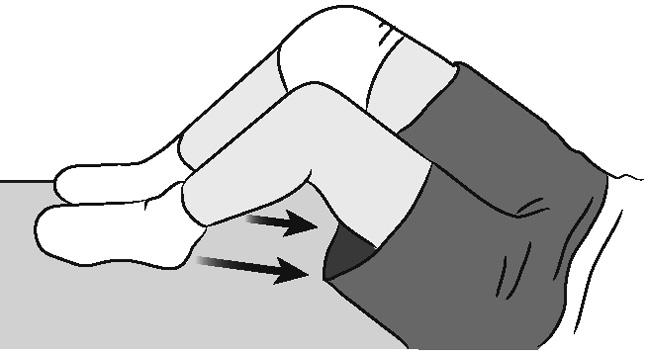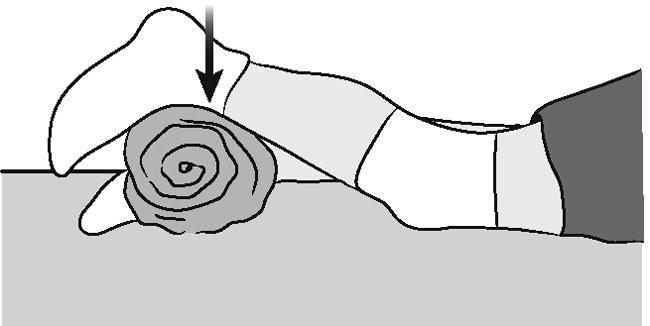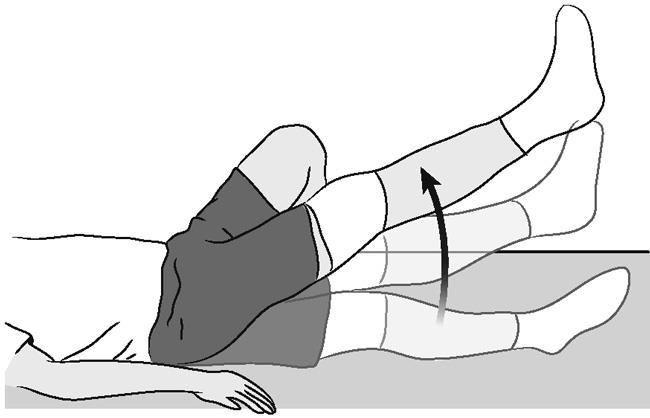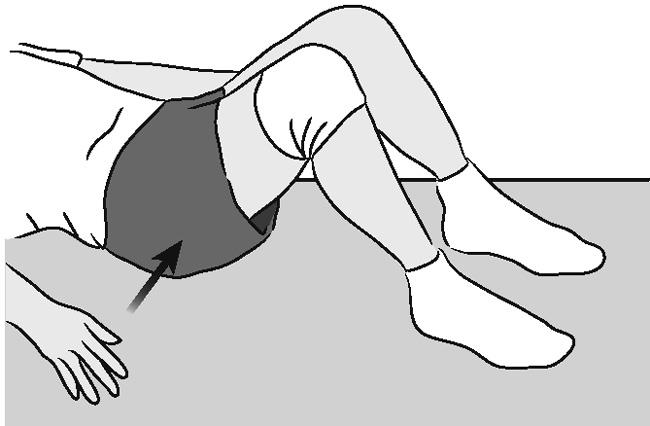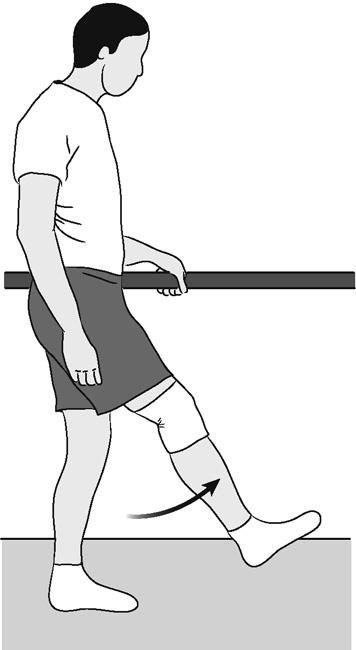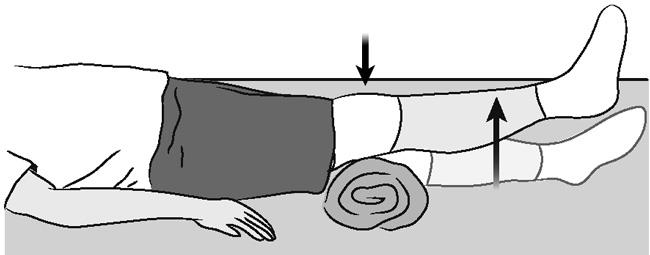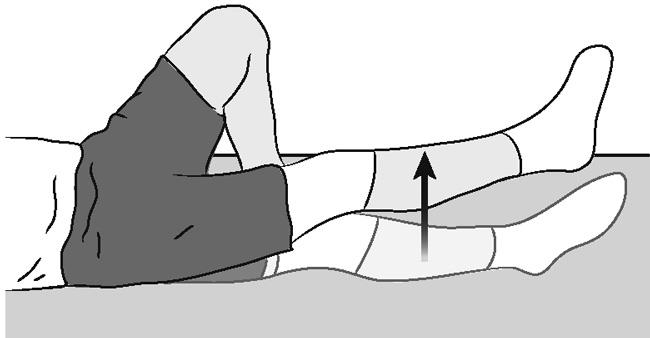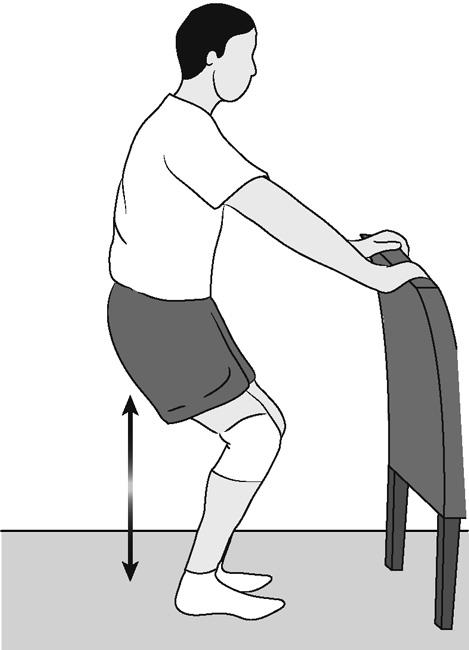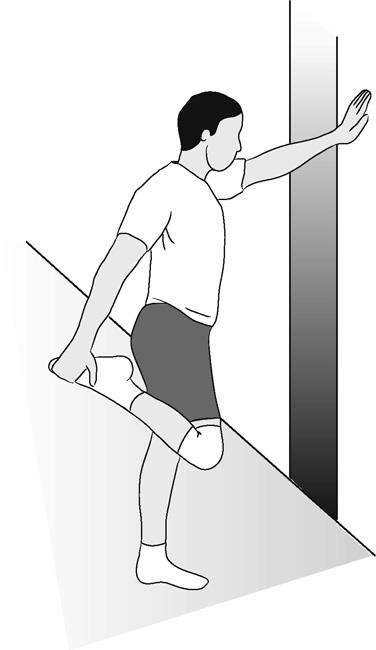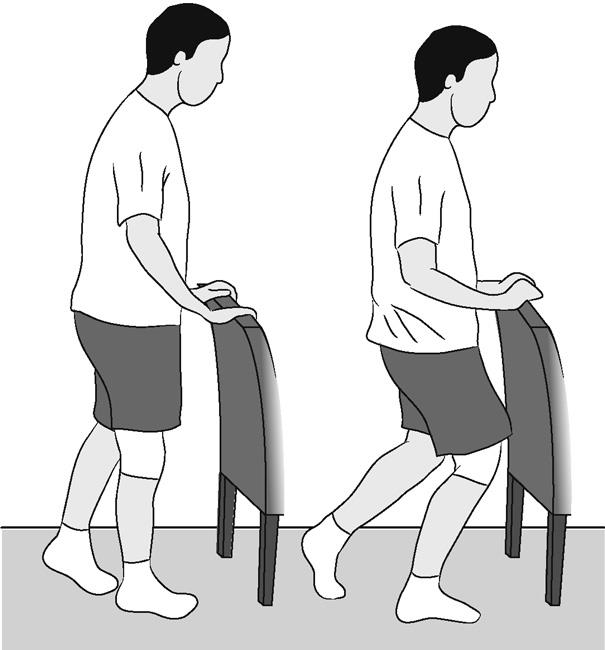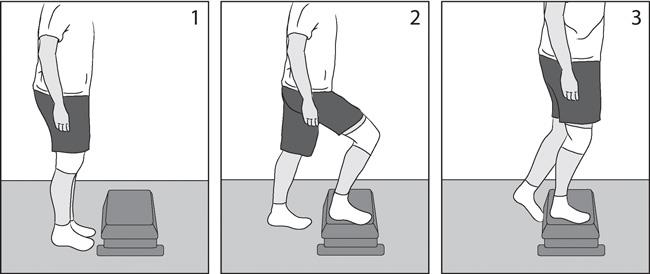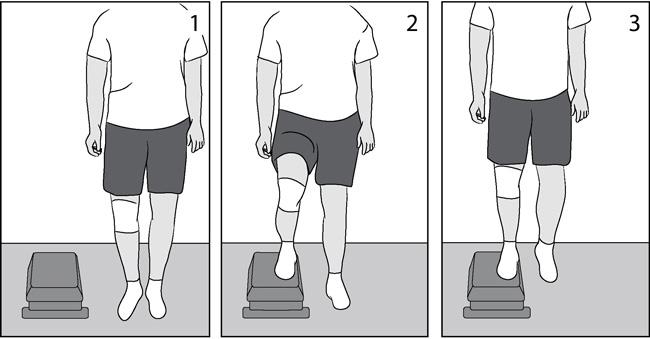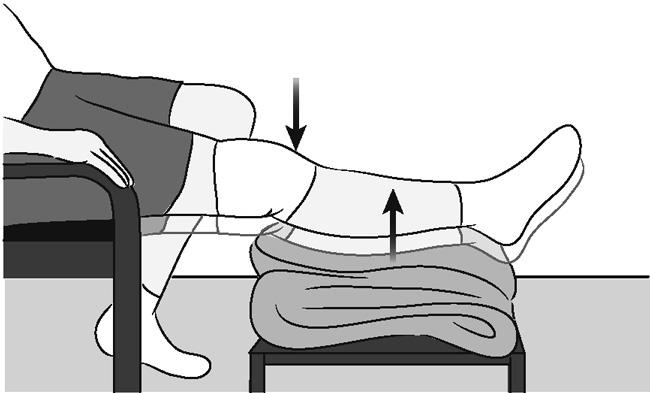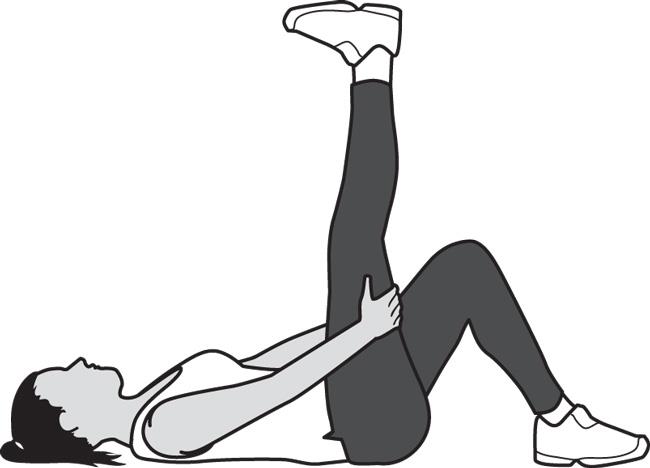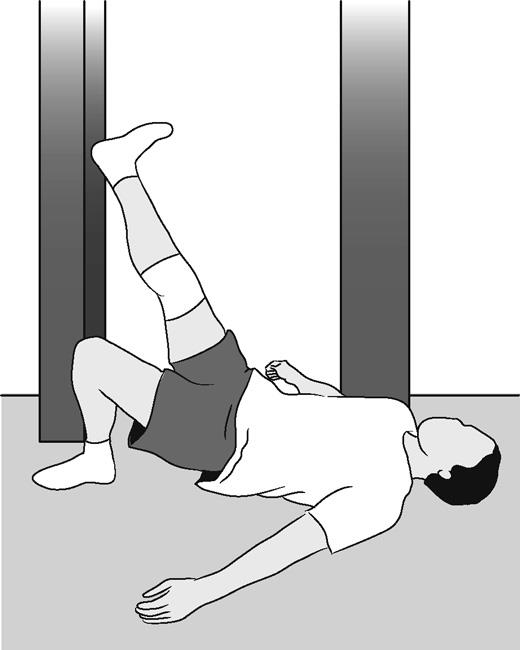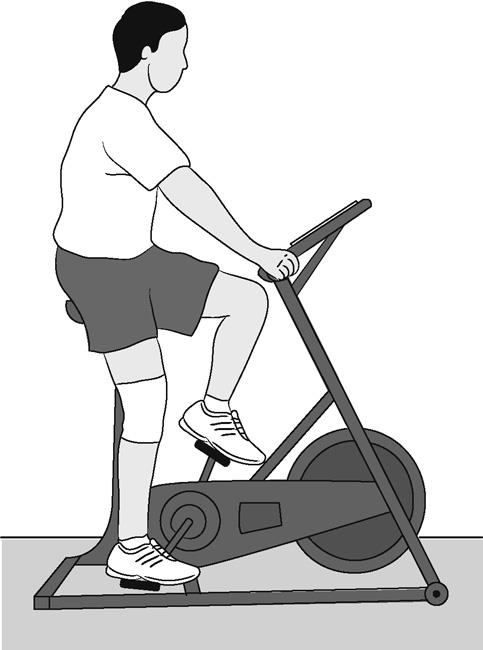Recovery
Knee Arthroscopy Exercise Guide
Regular exercise to restore strength and mobility to your knee is important for your full recovery after arthroscopic surgery. Your orthopaedic surgeon or physical therapist may recommend that you exercise for approximately 20 to 30 minutes, 2 or 3 times a day. They may suggest some of the exercises shown below. They may also advise you to engage in a walking program.
This guide can help you better understand your exercise or activity program, supervised by your orthopaedic surgeon or physical therapist. To ensure your safe recovery, be sure to check with your therapist or surgeon before performing any of the exercises or activities shown.
Initial Exercise Program
Hamstring Contraction
No movement should occur in this exercise.
- Lie or sit with your knees bent to about 10°.
- Pull your heels into the floor, tightening the muscles on the back of your thigh. Hold for 5 seconds, then relax.
- Repeat 10 times.
Quadriceps Contraction
- Lie on stomach with a towel roll under the ankle of your involved knee.
- Push your ankle down into the towel roll. Your leg should straighten as much as possible. Hold for 5 seconds, then relax.
- Repeat 10 times.
Straight Leg Raises
- Lie on your back, with your uninvolved knee bent.
- Straighten your involved knee. Slowly lift your leg about 6 inches, then hold for 5 seconds. Keep your toes pointing up.
- Continue lifting in 6-inch increments, holding each time.
- Reverse the procedure and return to the starting position.
- Repeat 10 times.
Advanced: Before starting, add weights to your ankle, starting with 1 pound of weight and building up to a maximum of 5 pounds of weight over 4 weeks.
Buttock Tucks
- While lying down on your back, tighten your buttock muscles. Hold tightly for 5 seconds, then relax.
- Repeat 10 times.
Straight Leg Raises, Standing
- Support yourself, if necessary, and slowly lift your involved leg forward, keeping your knee straight.
- Return to the starting position.
- Repeat 10 times.
Advanced: Before starting, add weights to your ankle, starting with 1 pound of weight and building up to a maximum of 5 pounds of weight over 4 weeks.
Intermediate Exercise Program
Terminal Knee Extension, Supine
- Lie on your back with a towel roll under your knee.
- Straighten your knee (still supported by the roll) and hold for 5 seconds. Keep your toes pointing up.
- Slowly return to the starting position.
- Repeat 10 times.
Advanced: Before starting, add weights to your ankle, starting with 1 pound of weight and building up to a maximum of 5 pounds of weight over 4 weeks.
Straight Leg Raises
- Lie on your back, with your uninvolved knee bent. Straighten your other knee with a quadriceps muscle contraction.
- Now, slowly raise your leg until your foot is about 12 inches from the floor. Slowly lower your leg to the floor and relax.
- Perform 5 sets of 10 repetitions.
Advanced: Before starting, add weights to your ankle, starting with 1 pound of weight and building up to a maximum of 5 pounds of weight over 4 weeks.
Partial Squat, with Chair
- Hold onto a sturdy chair or counter with your feet 6 to 12 inches from the chair or counter.
- While keeping your back straight, slowly bend your knees. DO NOT go any lower than 90°. Hold for 5 to 10 seconds.
- Slowly come back up. Relax.
- Repeat 10 times.
Quadriceps Stretch, Standing
- Standing with your involved knee bent, gently pull heel toward buttocks, feeling a stretch in the front of the leg. Hold for 5 seconds.
- Repeat 10 times.
Advanced Exercise Program
Knee Bend, Partial, Single Leg
- Stand supporting yourself with the back of a chair.
- Bend your uninvolved leg with your toe touching for balance as necessary.
- Slowly lower yourself, keeping your foot flat.
- Straighten up to the starting position. Relax.
- Repeat 10 times.
Do not overdo this exercise!
Step-ups, Forward
- Stand facing a 6-inch-high footstool or platform.
- Step forward up onto the platform, leading with your involved leg.
- Step down, returning to the starting position.
- Repeat 10 times.
Increase the height of the platform as your strength increases.
Step-ups, Lateral
- Stand sideways next to a 6-inch-high footstool or platform. The outside of your involved leg should be beside the platform.
- Step up onto the platform, leading with your involved leg.
- Step down, returning to the starting position.
- Repeat 10 times.
Increase the height of the platform as your strength increases.
Terminal Knee Extension, Sitting
- While sitting in a chair, support your involved heel on a stool.
- Straighten your knee. Hold for 5 seconds.
- Slowly return to the starting position.
- Repeat 10 times.
Hamstring Stretch, Supine
- Lie on your back.
- Bend your hip, grasping your thigh just above the knee.
- Slowly straighten your knee until you feel the tightness behind your knee. Hold for 5 seconds, then relax.
- Repeat 10 times.
- Repeat with the other leg.
If you do not feel this stretch, bend your hip a little more, and repeat.
No bouncing! Maintain a steady, prolonged stretch for the maximum benefit.
Hamstring Stretch, Supine at Wall
- Lie next to a doorway with one leg extended. Place your heel against the wall. The closer you are to the wall, the more intense the stretch.
- With your knee bent, move your hips toward the wall.
- Begin to straighten your knee. When you feel the tightness behind your knee, hold for 5 seconds, then relax.
- Repeat 10 times.
- Repeat with the other leg.
Exercise Bike
If you have access to an exercise bike, adjust the seat height so that the bottom of your foot just touches the pedal and complete a full revolution. As you become stronger, slowly increase the tension on the bike.
Start pedaling for 10 minutes a day. Increase the duration by 1 minute a day until you are pedaling for 20 minutes a day.
Walking
Walking is an excellent physical exercise activity for the middle stages of your recovery from surgery (after 2 weeks).
Running
Your doctor may recommend that you avoid running activities for a period of time after surgery to protect your knee. The length of the restriction will depend on which type of procedure you had. For example, if you had an ACL reconstruction or meniscus repair, your running restriction will be different than if you had torn cartilage removed. Your doctor will tell you when it is safe to gradually resume your running activities.
Pain or Swelling after Exercise
As you increase the intensity of your exercise program, you may experience temporary setbacks. This is common. You may also have new discomfort behind the kneecap. This can happen if the quadriceps muscle weakens a bit after the surgery, which underscores the importance of exercise after knee arthroscopy.
If your knee swells or hurts after a specific exercise activity, you should limit or stop that activity until you feel better. You should then RICE your knee:
- Rest. As much as possible, avoid activities that put weight on the knee for the first few days after symptoms appear.
- Ice. Use cold packs for 20 minutes at a time, several times a day. Do not apply ice directly on the skin.
- Compress with an elastic bandage.
- Elevate. Rest with your knee above the level of your heart.
Contact your orthopaedic surgeon if your symptoms persist.
Last Reviewed
October 2022
Contributed and/or Updated by
Peer-Reviewed by
AAOS does not endorse any treatments, procedures, products, or physicians referenced herein. This information is provided as an educational service and is not intended to serve as medical advice. Anyone seeking specific orthopaedic advice or assistance should consult his or her orthopaedic surgeon, or locate one in your area through the AAOS Find an Orthopaedist program on this website.







